#the yonghe temple
Explore tagged Tumblr posts
Text
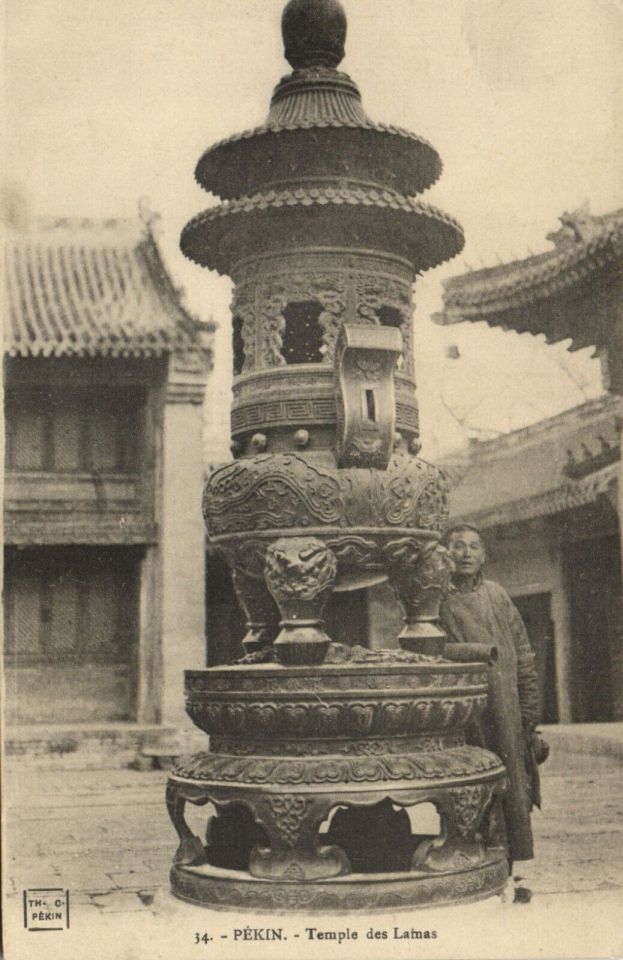
Incense burner in the Yonghe Temple, a Tibetan Buddhist temple in Beijing, China
French vintage postcard
#postal#the yonghe temple#incense#vintage#postkaart#beijing#ansichtskarte#photo#tibetan#tarjeta#ephemera#french#burner#sepia#postkarte#carte postale#briefkaart#china#temple#photography#postcard#buddhist#yonghe#historic
11 notes
·
View notes
Text

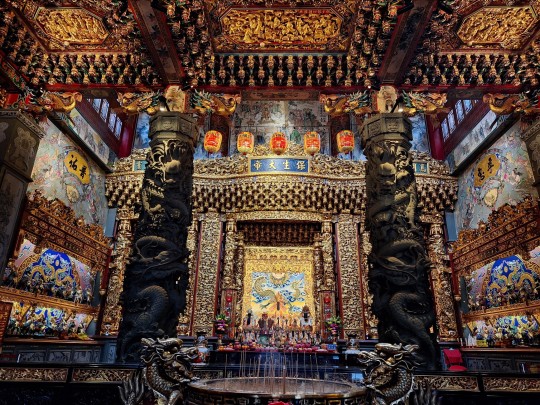
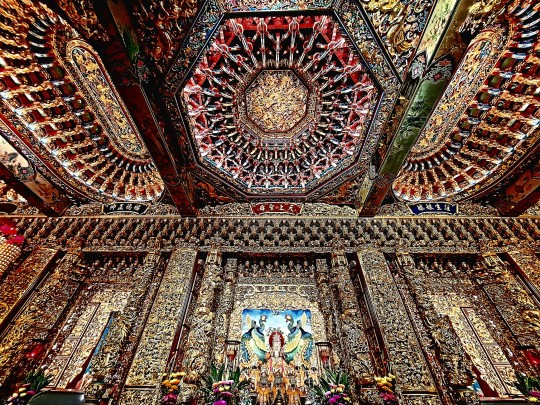
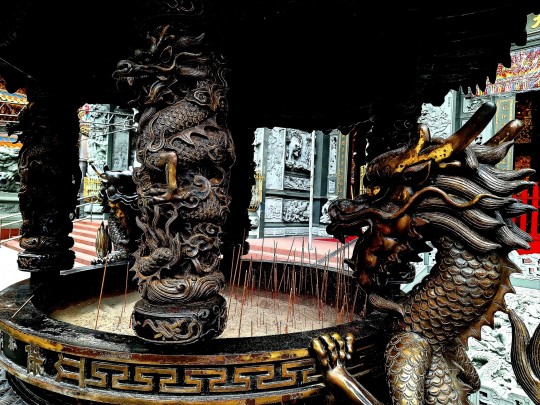
3 notes
·
View notes
Text
Happy (slightly early) New Year to everyone!
And also an update for my 2024 China series:
I was going to finish posting the pictures I took from the National Museum of China, however I didn't finish the Ancient China exhibition, because it was HUGE. I think basically the entire bottom floor of that museum was dedicated to this one exhibition, and we only saw less than half of it (going chronologically, we stopped and left right before the Tang dynasty section), since we had only one day planned for this museum. That was a huge mistake, and one of my two biggest regrets from the entire trip. Should have planned at least two days for this one museum.
BUT thankfully, the Ancient China exhibition is permanent! So I'm definitely going back there in spring-summer 2025 and I'm going to finally finish seeing that exhibition. I do have some pictures from the hasty visit this year, but since I am going to finish it next year, I think I will save the posts for that exhibition for next year. This means there will only be some pictures left for the porcelain exhibition (different from the Dehua porcelain exhibition, this one exhibits historical artifacts) and the ancient texts exhibition, those posts are in the works right now.
For my trip to Beijing next year, I'm also planning on visiting the Palace Museum/故宫博物院 again (aka Forbidden City/紫禁城). It's been 20 years since I last visited the Palace Museum, that was back when Palace Museum didn't have as much restoration work done or as many visitors. As a child, my biggest memory from that visit was the grass growing on the roof of the buildings.....that was strangely funny and sobering at the same time. It will be really exciting to see what has changed in this 600+ years old palace over the past 20 years.
A video of the seasonal scenery in the Palace Museum, by the Palace Museum's official channel (ugh I will be missing out on all the flowers!):
youtube
Besides National Museum of China and the Palace Museum, I am also planning on visiting other cultural and historical sites in Beijing like Prince Kung's Palace Museum/恭王府博物馆, Yonghe Temple/雍和宫, and Hongluo Temple/红螺寺. Maybe the Beijing Zoo/北京动物园 too (mostly to see the pandas lol). It's rather early so none of this is set in stone yet, but I'm definitely going to at least a handful of places.
See y'all next year (next week)!
47 notes
·
View notes
Text
experiencing other people's patience and poignancy that make them look like a well tempered synthesizer in that moment of observation is so humbling but i cant help feeling heavy and sad when i see it. i wish i could just appreciate it for what it is and move on with my day but i don't know, i find something sad in everything i see that is not traditionally breakneck speed, if i am not unearthing revelations and disrupting myself with them every day what am i doing with my life then.. so i turn to people who cook, i love when people cook and more than anything i love watching them cook and take their time. there was a video i watched recently of people burning incense at the yonghe temple, there were people who left rather quickly but some were there watching it burn kind of like a public devotion and i wish i was there with them, i would watch too. people who fish, all the old men that i see on my walks at 7 am when there is no one outside preparing their equipment, getting comfortable to sit by the river. i turn to so many different people almost in awe, i feel their calming presence and i get so sad, i am already so low but this really rips me to shreds. truthfully as much as i want to crash i am also very angry with feeling this way because i got a taste of the other side, why drive yourself to collision when you could be doing anything else like i desperately wish for certain things to go slower
190 notes
·
View notes
Text
CHINA, 14 DAYS 🇨🇳
China is the largest of all Asian countries. Occupying nearly the entire East Asian landmass, it covers approximately one-fourteenth of the land area of Earth, and it is almost as large as the whole of Europe. China is also one of the most populous countries in the world, rivaled only by India, which, according to United Nations estimates, surpassed it in population in 2023.
China has 59 UNESCO World Heritage Sites, ranking second in the world, just below Italy (60).
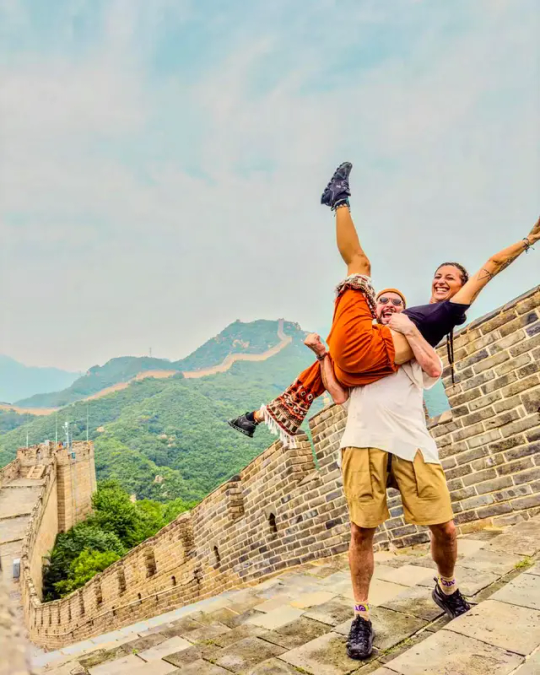
TIPS BEFORE DEPARTURE
Do not book hotels on Booking - use Trip.com where you can find many more acomodations with a cheaper price!
Trains are the best transport to use while visiting China. You can easily book them on Trip.com
It's necessary to download translator apps: nobody talks English so you need to translate everything by yourself. I suggest ARTraduttore and DeepL
It's also useful to download other apps before departure: Alipay and WeChat - with these 2 apps, you can easily book tickets for attractions and you will be able to pay everything and everywhere.
Download Didi: it's like Uber and it's super useful for short transfers in the cities. Cheap and essential!
Make sure to buy all the attractions on time (in high season tickets for attractions are often sold out).
Don't plan too many things every day: distances are huge and sometimes it's impossible to do everything you planned.
DAY 1-2 / BEIJING
From ancient walled capital to showpiece megacity in barely a century, Beijing (Běijīng, 北京), spins a breathless yarn of triumph, tragedy, endurance and innovation.
the history of Beijing which dates back 3 millenniums, making the Chinese capital one of the oldest cities in the world.
WHAT TO VISIT (FIRST 48H)
Temple of Heaven, large religious complex in the old outer city of Beijing, considered the supreme achievement of traditional Chinese architecture. Its layout symbolizes the belief that heaven is round and earth square. The three buildings are built in a straight line. The Hall of Prayer for Good Harvests (1420) has three concentric circles of massive wood columns symbolizing the four seasons, 12 months, and 12 daily hours; in a remarkable feat of engineering, they support the three roof levels and, in succession, a huge square brace (earth), circular architrave (heaven), and vast interior cupola.

Lama Temple: Lama Temple, also named Yonghe Lamasery, is Beijing's principal and largest Buddhist Temple. It was built in 1694, as part of the city wall for Emperor Yongzheng, prior to him rising to the throne in 1722. Yongzheng’s son - Emperor Qianlong, sent for 300 Tibetan monks and 200 Chinese students and housed them in the palace in 1744. From then on, the dwelling served as a temple and monastery, and considered one of the greatest centres of Buddhism outside of Tibet. The temple has five main halls, each soaring over the one before, with clockwise changing prayer wheels, multicoloured tiles, lion statues and deep within the largest wooden Buddha in the world. Visitors are encouraged to purchase and burn joss sticks at the site to worship Buddha. By far one of the cities most impressive and fascinating temples, you could spend a whole day here enjoying the breath taking statues and artefacts.
DAY 3-4 / CHENGDU
Chengdu is the original city name which dates back to its founding over 2000 years ago. Chengdu is the capital of southwestern China's Sichuan province, as well as one of the largest cities and the most important economic, financial, commercial, cultural, transportation, and communication centers in Western China with a population of more than 14 million. The city is famed for its cuisine, and is also home to the famous Chengdu Research Base of Giant Panda Breeding, a conservation center where visitors can view endangered giant pandas in a natural habitat. Chengdu also hosts more than 260 Fortune 500 companies. In 2006, it was named China's 4th most livable city by China Daily. The fertile Chengdu Plain, on which Chengdu is located, is also known as the “Country of Heaven,” a phrase also often translated as “The Land of Abundance.”

3 MUST-DO
Visit the Panda Center 🐼 The Chengdu Research Base of Giant Panda Breeding is a public non-profit breeding and research institute for giant pandas, red pandas, and other rare animals, located in Chengdu, Sichuan.
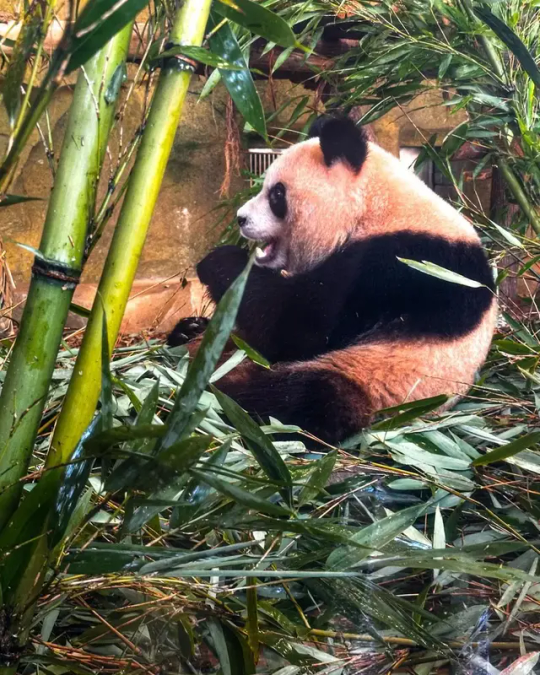
Go to Leshan and visit the Giant Buddha of the World. In 713, a monk named Hai Tong decided to carve a Maitreya Buddha statue to watch over the river, a project that took 90 years, until 803, to fully complete. The resulting Buddha was immense: Its fingers are 27 feet (8.3 m) long and the shoulders are 92 feet (28 m) across, nearly the size of a basketball court. At 23 feet (7 m) long, the ears, made of wood covered in mud, were attached to the sculpture in a wonder of ancient engineering. The statue was originally sheltered by a 13-story wooden structure but this was destroyed during the Ming dynasty.

Try the Tea experience in a traditional Tea House 🫖
We stayed at FlipFlop Hostel. We really loved the atmosphere and the staff was super helpful with us.
DAY 5 / CHONGQING
Chongqing, city (shi) and provincial-level municipality (zhixiashi), southwest-central China. The leading river port, transportation hub, and commercial and industrial centre of the upper Yangtze River (Chang Jiang) basin, the city is located some 1,400 miles (2,250 km) from the sea, at the confluence of the Yangtze and Jialing rivers. During the Sino-Japanese War (1937–45) it was the capital of Nationalist China. The city was named Chongqing (“Double-Blessed”) in 1189 under the Nan (Southern) Song dynasty (1127–1279 ce). At that time the city occupied a commanding position between the prefectures of Shunqing (centred on modern Nanchong) to the north and Shaoqing (centred on modern Pengshui) to the east.
3 MUST-DO:
Go to Liziba station: As the first overhead station built across and packed with skyscrapers, it has been honored and known in the world since its inception. Any visitor on his first trip here, whether sitting in the train or looking up from the viewing platform, can be amazed when watching the train “disappearing” through the high-rise block. It is no accident that Liziba became a China’s 70-year Growth Landmark. Embedded with the wisdom of connecting apartments with light-rail transit, Liziba takes the lead in pushing the Mountain City’s public transport forward, without a stop. Besides this incredible transport, Liziba is full of gentle and tough stories.
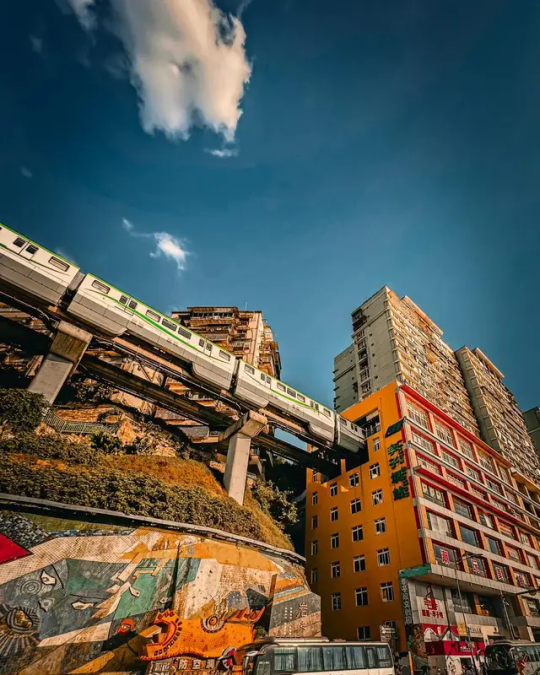
Go visit the Chongqing Bookstore
Go to Hongyadong, enjoy a walk inside and have a Hotpot there, the typical dish of the city. Hongyadong has witnessed the tides of history and weathered the centuries to blossom into the huge tourist attraction it is today. Until around merely 20 years ago, Hongyadong was home to the working class of Chonqing and its distinctive stilted buildings (unique to Southwestern China). After a renovation in the 90s, the spirit of Chongqing’s hardworking people has been kept in a new dazzling form. Visitors can enjoy the unique multi-level Chongqing-style architecture of centuries before, while shopping, eating and playing, all the while being swept away by the breathtaking riverside views of the city, and of Hongyadong itself - which has been lit up with a thousand lights.Since the rapid development of the Internet, Chongqing has become one of the hottest cities, which attracts people to visit.

We then spent the night at Futon, the best hotel room we have been. We enjoyed the huge bath inside the room with an amazing view on the city lights and skyscrapers✨
DAY 6 / CHENGDU
After a nice breakfast in Chongqing we came back to Chengdu and we enjoyed a relax afternoon. Here what we did:
We tasted the famous Mapo Tofu and the super spicy cuisine 🌶️🌶️🌶️
We experienced a real Chinese massage in a very fun way. We went to R&F mall to a massage center named Golden Impression and we watched a 90 min movie in a private room with a full body massage 😍
Then we spent the night at Buddha Zen Hotel and we had drinks in a karaoke bar nearby 🎤
DAY 7-8 / XI'AN
Located in the middle of the Guanzhong Plain, Xi'an is one of the three international metropolises and the 9th Regional Central City of China designated by China's central government. It has earned the honorary titles of National Sanitary City, National Garden City, China City with Best Images, China City with Best International Images, and China's Civilized City. Remarkably, it has been named China Happiest City seven years in a row.
Xi'an was the ancient capital of China and a cradle of civilization together with Athens, Cairo and Rome. It was the starting point of the ancient Silk Road. As a famous historical cultural city, Xi'an boasts the world’s richest cultural heritage and the most complete preservation of the ancient city and moat system. With more than 7,000 years of civilization, more than 3,100 years of city building and over 1,100 years of capital establishment, Xi'an can justly be called an "Open Air Historical Museum"; and indeed it has a total of 126 museums. The Qin Shihuang Mausoleum Terracotta Warriors and Horses, Big Wild Goose Pagoda, Little Wild Goose Pagoda, Tang Chang'an City Daming Palace Site, Han Chang'an City Weiyang Palace Site, and Xingjiao Temple Pagoda have all been inscribed in the World Heritage List.
3 MUST-DO:
More than 8000 warriors + 100 horses + 18 chariots. The terracotta army is a collection of terracotta sculptures depicting the armies of Qin Shi Huang, the first emperor of China. It is a form of funerary art buried with the emperor in 210–209 BCE with the purpose of protecting him in his afterlife. The Terracotta Army was discovered on March 1974 by a group of farmers—Yang Zhifa and his five brothers.
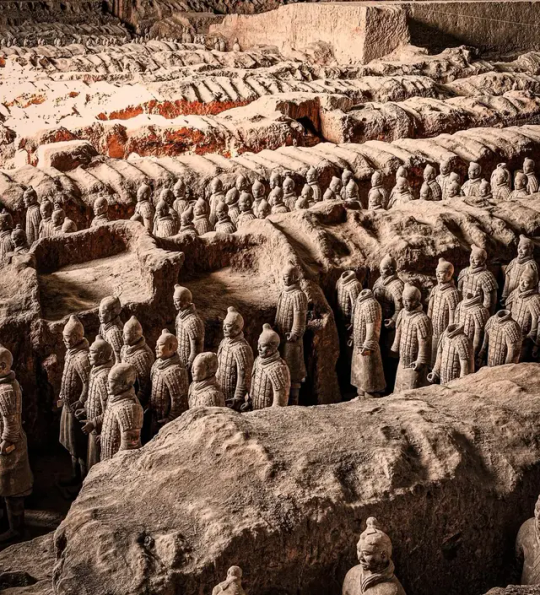
Walk through Xi'an ancient fortification walls. Xian Ancient City Wall is the landmark and a must-see attraction in Xian which stretches round the old city. Built by Zhu Yuanzhang, the first Emperor of the Ming Dynasty, the city wall is the most complete city wall that has survived in China and one of the largest ancient military defensive systems in the world.
Explore the Muslim neighbourhood and enjoy a street food tour. Don't forget to visit the Bell Tower, Drum Tower and Goose Pagoda 😉
DAY 9-10 / GREAT WALL
In c. 220 B.C., under Qin Shi Huang, sections of earlier fortifications were joined together to form a united defence system against invasions from the north. Construction continued up to the Ming dynasty (1368–1644), when the Great Wall became the world's largest military structure. Its historic and strategic importance is matched only by its architectural significance. The Great Wall was continuously built from the 3rd century BC to the 17th century AD on the northern border of the country as the great military defence project of successive Chinese Empires, with a total length of more than 20,000 kilometers. The Great Wall begins in the east at Shanhaiguan in Hebei province and ends at Jiayuguan in Gansu province to the west. Its main body consists of walls, horse tracks, watch towers, and shelters on the wall, and includes fortresses and passes along the Wall.
We didn't go to Badaling, as it was too crowded. We preferred to spend the night at Yueli Homestay Delight Inn and enjoyed the Great Wall from Shuiguan (very closed to Badaling anyways). We drove with Didi - the 1h drive cost us 30€.

DAY 11-12 / BEIJING (LAST 48H)
Once we came back to Beijing we enjoyed other attractions of the city, restaurant and shopping
We visited the Summer Palace. The Summer Palace in Beijing – first built in 1750, largely destroyed in the war of 1860 and restored on its original foundations in 1886 – is a masterpiece of Chinese landscape garden design. The natural landscape of hills and open water is combined with artificial features such as pavilions, halls, palaces, temples and bridges to form a harmonious ensemble of outstanding aesthetic value.
We got a tour on get your guide and visited Tiananmen Square and the Forbidden City. Forbidden City, imperial palace complex at the heart of Beijing (Peking), China. Commissioned in 1406 by the Yongle emperor of the Ming dynasty, it was first officially occupied by the court in 1420. It was so named because access to the area was barred to most of the subjects of the realm. Government functionaries and even the imperial family were permitted only limited access; the emperor alone could enter any section at will. The 178-acre (72-hectare) compound was designated a UNESCO World Heritage site in 1987 in recognition of its importance as the centre of Chinese power for five centuries, as well as for its unparalleled architecture and its current role as the Palace Museum of dynastic art and history.
Tiananmen Square 🫶🇨🇳
Some Restaurants:
King's Joy, the cheapest 3-michelin- stars restaurant of the World.
Our very very favourite restaurant is Fu Hui Ci Yuan, an incredible vegetarian restaurant.
Try the Duck at Sinji Minfu - it takes a while to wait but Edo said the duck really worths?
DAY 13 / BACK TO MILAN ✈️
We booked a direct flight Milan-Beijing and Beijing-Milan on Airchina.
Text me, if you want to have the complete excel file.
0 notes
Text
New Post has been published on Found The World
New Post has been published on https://foundtheworld.com/the-yonghe-temple/
The Yonghe Temple: a Buddhist Must-See Place
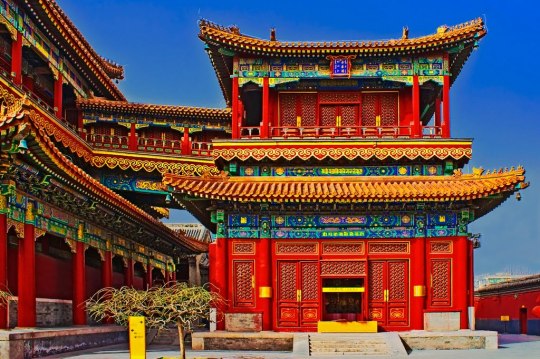
So you are planning your visit to China. May I just say that I am not jealous of your position at this point. China is a giant country. And that concerns not only the territory and population. The Celestial Empire is packed with any kind of historical and cultural monuments your heart can desire. Choosing amongst these is a brave decision you have to make.
It will be wise to narrow your journey to one city, if you really want to have a chance to ‘feel’ it from inside out. And what better place to start than from the capital itself – Beijing. Unfortunately, that would hardly make your further choices easier. Beijing has so many amazing sights to offer. But if you are interested in Buddhism, then this article has got your back covered.
There are certainly thousands of Buddhist temples out there. A whole life will probably not be enough to admire all of them. Then why not choose visiting the one that has three pieces of art that are included into the Guinness book of records?
12 Yonghegong St., Dongcheng Qu, Beijing, China.
It is the most famous Tibetan Buddhist temple outside Tibet. The temple is active nowadays. And you can find yourself bumping into Tibetan, Chinese or Mongolian monks, while admiring the views. It was originally built in 1694 as an imperial palace. Only 50 years later it became a lamasery. Inside, the temple is divided into halls. It is not only the artwork inside you can appreciate, but also the marvelous names of the rooms. The Hall of Everlasting Protection, the Hall of the Heavenly Kings, the Pavilion of Ten Thousand Happinesses etc. Many statues of Buddha, the amazing fres-coes, arches, carpentry and roofs – everything in this temple seems to be so beautifully calming.
The Guiness Book of Records (1993)
Let’s get back to the main reason why the Yonghe Temple attracts millions of tourists every year. There are actually three of those. 1) Three Bronze Statues of the Buddhas of the Three Ages You can find them in the Hall of Harmony and Peace. The statue of the Buddha representing the present stands in the center. Buddha of the future is on the left, while the Buddha of the past is on the right.
2) The Five-Hundred-Arhat-Hill To find this masterpiece go to the Hall of the Wheel of the Law. The artwork is a carving with stat-ues of the Arhats. The Arhat in Buddhism is a ‘perfected person’ who reached nirvana. The carving is made of red sandalwood. To make the statues five types of metals were used: iron, copper, tin, gold and silver.
3) The Statue of the Maitreya Buddha Most consider this to be the most fascinating statue in the temple. You can find it in the marvelous Pavilion of Ten Thousand Happinesses. The statue of the Maitreya Buddha is made from a single piece of sandalwood. The entirely white masterpiece is 18 meters high without the underground. ‘Maitreya’ is the future Buddha of this world.
More Information
Besides the artworks mentioned, there certainly are plenty of things to see. The Yonghe Temple is the largest lamasery in modern China. But remember to consult the opening hours before heading there. Depending on the time of the year the temple may close at 4 or 4.30 p.m. It opens its doors at 9 a.m. every day. The admission fee is CNY 25. It is easy to get there by the subway or one out of many bus routes.
0 notes
Photo

Yonghe Temple, Beijing. योंगहे मंदिर, योंगे लामासरी या योंगहे लामा मंदिर के रूप में भी जाना जाता है, बीजिंग शहर के पूर्वोत्तर के कोने में स्थित है, जिसे आज के दिनों में सबसे बड़ा और सबसे ज्यादा संरक्षित लमजरी माना जाता है। किंग राजवंश के दौरान 1694 में शुरू हुआ, यह इमारत सम्राट योंगज़ेंग का निवास था जब वह सिर्फ एक राजकुमार थे। हालांकि, 1744 में, किंग राजवंश ने औपचारिक रूप से एक लामझरी के निवास स्थान को बदल दिया, और इसलिए यह लामा प्रशासन का राष्ट्रीय केंद्र बन गया। योंगहे गेट, मूल रूप से योंगहे मंदिर के मुख्य प्रवेश द्वार, को अब देवराज हॉल (स्वर्गीय राजाओं का हॉल) कहा जाता है, क्योंकि इन्हें अंदरूनी महल की दीवारों के दोनों ओर स्थित चार बहुत शक्तिशाली स्वर्गीय राजाओं की मूर्तियां हैं। पूर्वी ओर से उत्तरी स्वर्गीय राजा एक साँप और खजाने रखता है; पूर्वी किनारे पर दक्षिणी राजा एक छतरी और एक चांदी के माउस रखता है; पश्चिमी तरफ दक्षिणी एक तलवार धारण करता है और पश्चिमी तट पर उत्तरी एक पाइप (प्राचीन चीन में इस्तेमाल एक संगीत वाद्य) रखती है। Image Credit: Found The World
0 notes
Photo

12 Photos That Will Make You Want to Visit The Lama Temple in Beijing by Lindsay Shapka
Located in the middle of Beijing in China, the Yonghe Temple aka Harmony and Peace Palace Lamasery aka Yonghe Lamasery aka Lama Temple is a complex made up of a maze of elaborate arches, stunning tapestries and massive temples, opening to expansive courtyards filled with people on their knees, eyes closed, filling the air with smoke from burning incense.
Planning your visit to the Lama Temple
Admission CNY 25 (approx. $4) and free for children no taller than 1.2 meters (3.9 feet).
Opening Hours April to October from 9 am to 4:30 pm; November to March 9 am to 4 pm.
Getting There By Subway Take Line 2 or 5 to Yonghegong (Yonghe Temple) Station, get out of the station from Exit C. Walk south about 400 meters. The temple is on the east side of the road.
Getting There By Bus Take bus 13, 116, 117 or 684 and get off at Yonghegong Station.
See the photos!
#lama Temple#Tibetan buddhism#Tibet temple#China#Beijjing#must-see attraction#Yonghe Temple#travel tips#buddhism
1 note
·
View note
Text

In 2006, a Taoist priest by the name of Lu Wei-ming founded a temple for Tu'er Shen in Yonghe District in the New Taipei City in Taiwan.[12] Roughly 9,000 gay pilgrims visit the temple each year praying to find a suitable partner.[13] The temple also performs a love ceremony for gay couples[14] at the world's only religious shrine for homosexuals.[15] As of 2020, the temple remains the only extant shrine to the deity. (Wikipedia)
14 notes
·
View notes
Text

Altar in the Tibetan Buddhist Yonghe Temple in Beijing, China
Japanese vintage postcard
#postkaart#photo#postcard#Temple#Buddhist#photography#postal#sepia#postkarte#briefkaart#vintage#carte postale#China#ansichtskarte#Yonghe#ephemera#Tibetan#historic#Japanese#Beijing#tarjeta#Altar
11 notes
·
View notes
Photo










- SHUT UP! TWIST AGAIN! CHINA TOUR 2017 -
[08/09]
#tour report#shut up twist again#suta#sutachina2017#sutachinapart3#china#punk rock#baiona#chuckersatz#2017#Tianjin#13 club#Yonghe Lama Temple#lama temple#beijing#school livehouse#kyiv#st vladimir church
1 note
·
View note
Photo
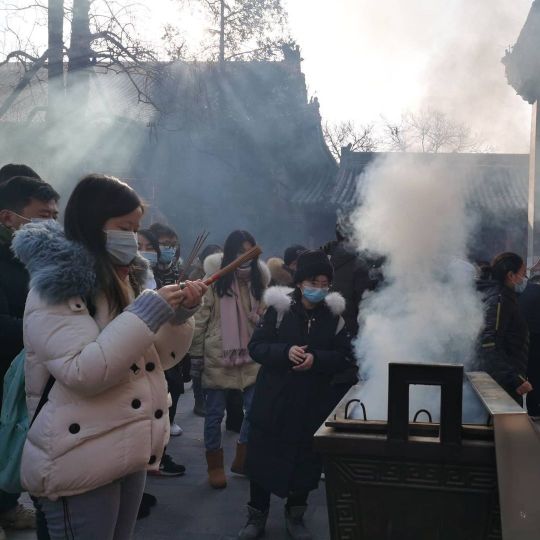
在 Yonghe Temple https://www.instagram.com/p/CTycY1TNe3B/?utm_medium=tumblr
1 note
·
View note
Photo




Yonghe Gong, Beijing, 8 August 2018
0 notes
Photo

#beijing #city #street #streetphotography #china #bridge #dongcheng #yonghe #temple #yonghetemple #thatsbeijing #hypebeijing #ig_beijing #ig_china #instagram #instagood #instagreat #instapassport #instabeijing #shotoniphone #iphonephotography #iphone6splus #snapseed #minoopy #YourShotPhotographer #OnGoogleMaps https://www.instagram.com/p/BsbEMH_AlzT/?utm_source=ig_tumblr_share&igshid=f42dp9vtd38x
#beijing#city#street#streetphotography#china#bridge#dongcheng#yonghe#temple#yonghetemple#thatsbeijing#hypebeijing#ig_beijing#ig_china#instagram#instagood#instagreat#instapassport#instabeijing#shotoniphone#iphonephotography#iphone6splus#snapseed#minoopy#yourshotphotographer#ongooglemaps
0 notes
Photo

Yonghe Baofu Temple, New Taipei, Taiwan via /r/architecture https://ift.tt/3cEUX3z
2 notes
·
View notes

